1. Hunt O, Hepper P, Johnston C, Stevenson M, Burden D. Professional perceptions of the benefits of orthodontic treatment. Eur J Orthod. 2001; 23:315–323. PMID:
11471274.

2. Cunningham SJ, Hunt NP. Quality of life and its importance in orthodontics. J Orthod. 2001; 28:152–158. PMID:
11395531.

3. Brook PH, Shaw WC. The development of an index of orthodontic treatment priority. Eur J Orthod. 1989; 11:309–320. PMID:
2792220.

4. Bellot-Arcís C, Montiel-Company JM, Almerich-Silla JM, Paredes-Gallardo V, Gandía-Franco JL. The use of occlusal indices in high-impact literature. Community Dent Health. 2012; 29:45–48. PMID:
22482249.
5. de Oliveira CM, Sheiham A, Tsakos G, O'Brien KD. Oral health-related quality of life and the IOTN index as predictors of children's perceived needs and acceptance for orthodontic treatment. Br Dent J. 2008; 204:1–5. PMID:
18340336.

6. Klages U, Claus N, Wehrbein H, Zentner A. Development of a questionnaire for assessment of the psychosocial impact of dental aesthetics in young adults. Eur J Orthod. 2006; 28:103–111. PMID:
16257989.

7. de Oliveira CM, Sheiham A. The relationship between normative orthodontic treatment need and oral health-related quality of life. Community Dent Oral Epidemiol. 2003; 31:426–436. PMID:
14986910.

8. Sardenberg F, Martins MT, Bendo CB, Pordeus IA, Paiva SM, Auad SM, et al. Malocclusion and oral health-related quality of life in Brazilian school children. Angle Orthod. 2013; 83:83–89. PMID:
22612389.

9. Locker D, Jokovic A. Using subjective oral health status indicators to screen for dental care needs in older adults. Community Dent Oral Epidemiol. 1996; 24:398–402. PMID:
9007357.

10. Jokovic A, Locker D, Stephens M, Kenny D, Tompson B, Guyatt G. Validity and reliability of a questionnaire for measuring child oral-health-related quality of life. J Dent Res. 2002; 81:459–463. PMID:
12161456.
11. DiBiase AT, Sandler PJ. Malocclusion, orthodontics and bullying. Dent Update. 2001; 28:464–466. PMID:
11806190.

12. Onyeaso CO, Sanu OO. Perception of personal dental appearance in Nigerian adolescents. Am J Orthod Dentofacial Orthop. 2005; 127:700–706. PMID:
15953895.

13. Sardenberg F, Oliveira AC, Paiva SM, Auad SM, Vale MP. Validity and reliability of the Brazilian version of the psychosocial impact of dental aesthetics questionnaire. Eur J Orthod. 2011; 33:270–275. PMID:
20713456.

14. Lin H, Quan C, Guo C, Zhou C, Wang Y, Bao B. Translation and validation of the Chinese version of the psychosocial impact of dental aesthetics questionnaire. Eur J Orthod. 2013; 35:354–360. PMID:
22117023.

15. Montiel-Company JM, Bellot-Arcís C, Almerich-Silla JM. Validation of the psychosocial impact of dental aesthetics questionnaire (Pidaq) in Spanish adolescents. Med Oral Patol Oral Cir Bucal. 2013; 18:e168–e173. PMID:
23229257.

16. Alonso J, Pérez P, Sáez M, Murillo C. Validity of the occupation as an indicator of social class, according to the British Registrar General classification. Gac Sanit. 1997; 11:205–213. PMID:
9494285.
17. Hassan AH, Amin Hel-S. Association of orthodontic treatment needs and oral health-related quality of life in young adults. Am J Orthod Dentofacial Orthop. 2010; 137:42–47. PMID:
20122429.

18. Klages U, Bruckner A, Guld Y, Zentner A. Dental esthetics, orthodontic treatment, and oral-health attitudes in young adults. Am J Orthod Dentofacial Orthop. 2005; 128:442–449. PMID:
16214625.

19. Cooper S, Mandall NA, DiBiase D, Shaw WC. The reliability of the Index of Orthodontic Treatment Need over time. J Orthod. 2000; 27:47–53. PMID:
10790444.

20. Tuominen ML, Tuominen RJ, Nyström ME. Subjective orthodontic treatment need and perceived dental appearance among young Finnish adults with and without previous orthodontic treatment. Community Dent Health. 1994; 11:29–33. PMID:
8193980.
21. Bellot-Arcís C, Montiel-Company JM, Manzanera-Pastor D, Almerich-Silla JM. Orthodontic treatment need in a Spanish young adult population. Med Oral Patol Oral Cir Bucal. 2012; 17:e638–e643. PMID:
22322504.
22. Svedström-Oristo AL, Pietilä T, Pietilä I, Vahlberg T, Alanen P, Varrela J. Acceptability of dental appearance in a group of Finnish 16- to 25-year-olds. Angle Orthod. 2009; 79:479–483. PMID:
19413382.

23. Flores-Mir C, Major PW, Salazar FR. Self-perceived orthodontic treatment need evaluated through 3 scales in a university population. J Orthod. 2004; 31:329–334. PMID:
15608349.

24. Hunt O, Hepper P, Johnston C, Stevenson M, Burden D. The Aesthetic Component of the Index of Orthodontic Treatment Need validated against lay opinion. Eur J Orthod. 2002; 24:53–59. PMID:
11887379.

25. Soh J, Sandham A. Orthodontic treatment need in Asian adult males. Angle Orthod. 2004; 74:769–773. PMID:
15673139.
26. Manjith CM, Karnam SK, Manglam S, Praveen MN, Mathur A. Oral Health-Related Quality of Life (OHQoL) among adolescents seeking orthodontic treatment. J Contemp Dent Pract. 2012; 13:294–298. PMID:
22917999.

27. Klages U, Bruckner A, Zentner A. Dental aesthetics, self-awareness, and oral health-related quality of life in young adults. Eur J Orthod. 2004; 26:507–514. PMID:
15536839.

28. Dahong X, Xiangrong C, Ying L, Yusong L, Ying G, Yan S. Effect of incisor position on the self-perceived psychosocial impacts of malocclusion among Chinese young adults. Angle Orthod. 2013; 83:617–622. PMID:
23163832.

29. Bernabé E, Tsakos G, Messias de Oliveira C, Sheiham A. Impacts on daily performances attributed to malocclusions using the condition-specific feature of the Oral Impacts on Daily Performances Index. Angle Orthod. 2008; 78:241–247. PMID:
18251604.

30. Doğan AA, Sari E, Uskun E, Sağlam AM. Comparison of orthodontic treatment need by professionals and parents with different socio-demographic characteristics. Eur J Orthod. 2010; 32:672–676. PMID:
20299423.
31. de Oliveira CM, Sheiham A. Orthodontic treatment and its impact on oral health-related quality of life in Brazilian adolescents. J Orthod. 2004; 31:20–27. PMID:
15071148.

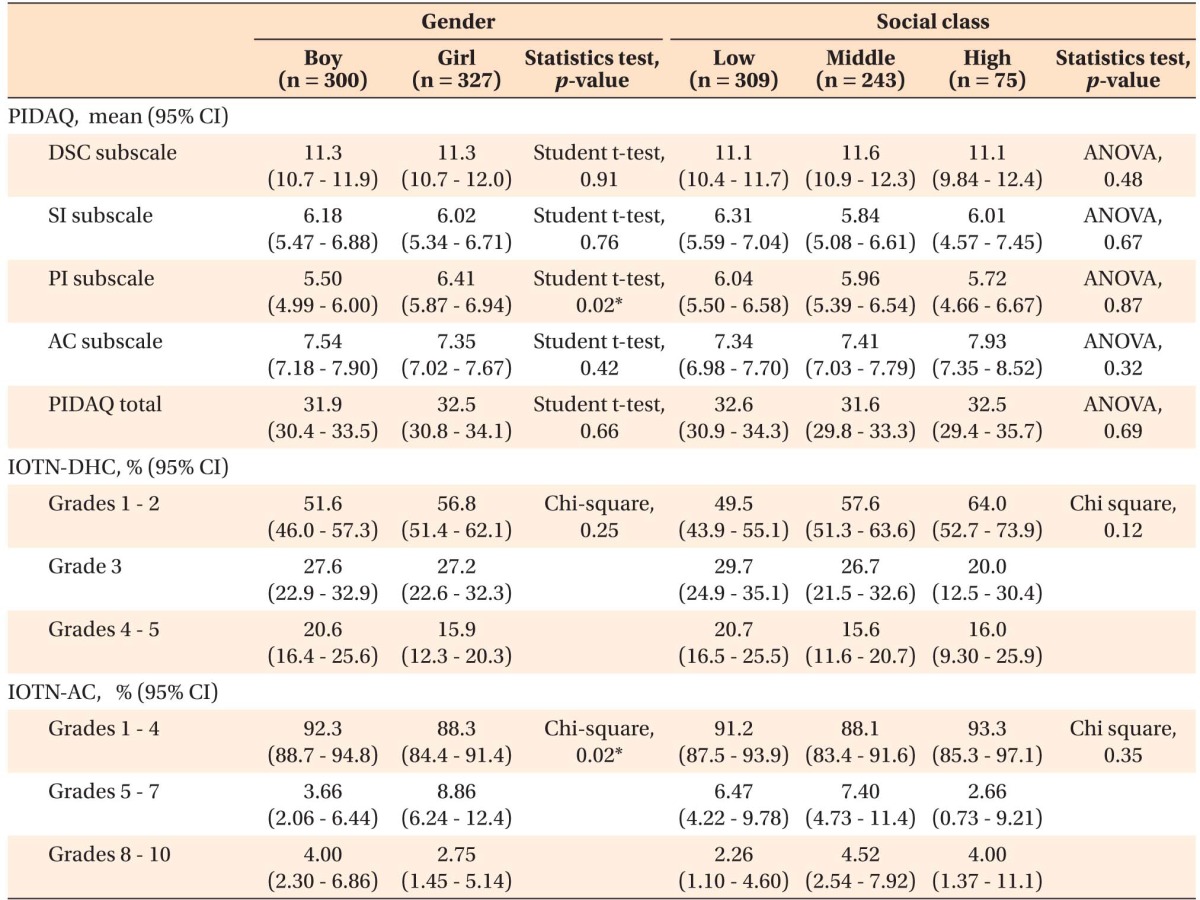
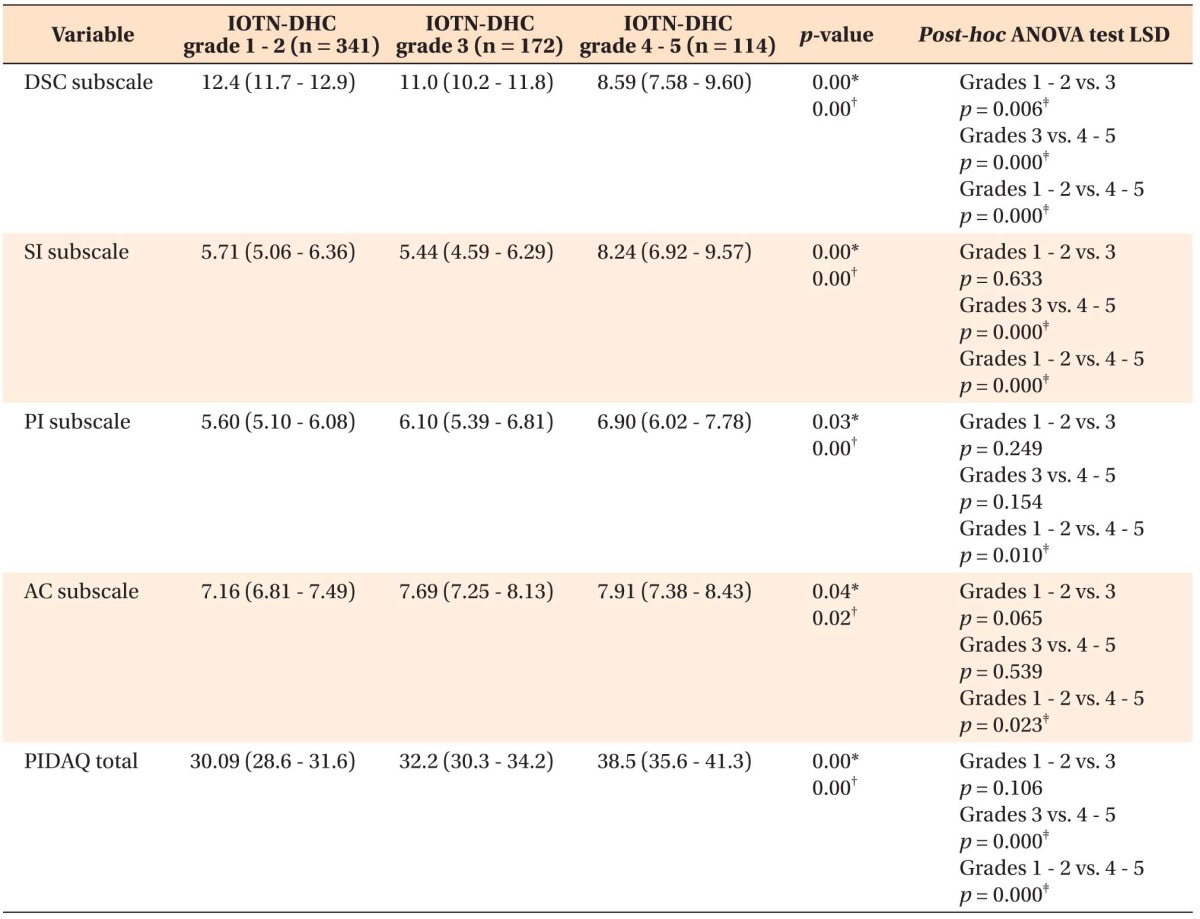
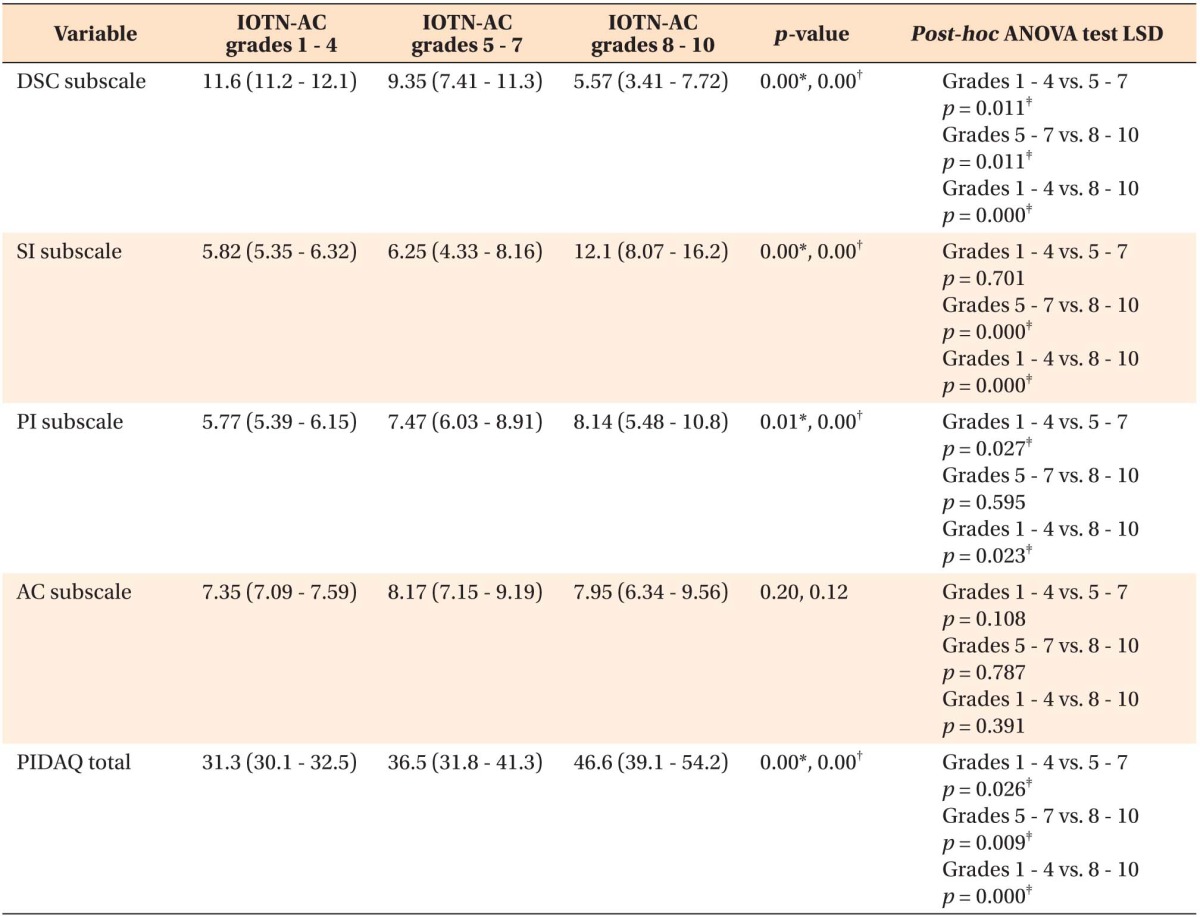
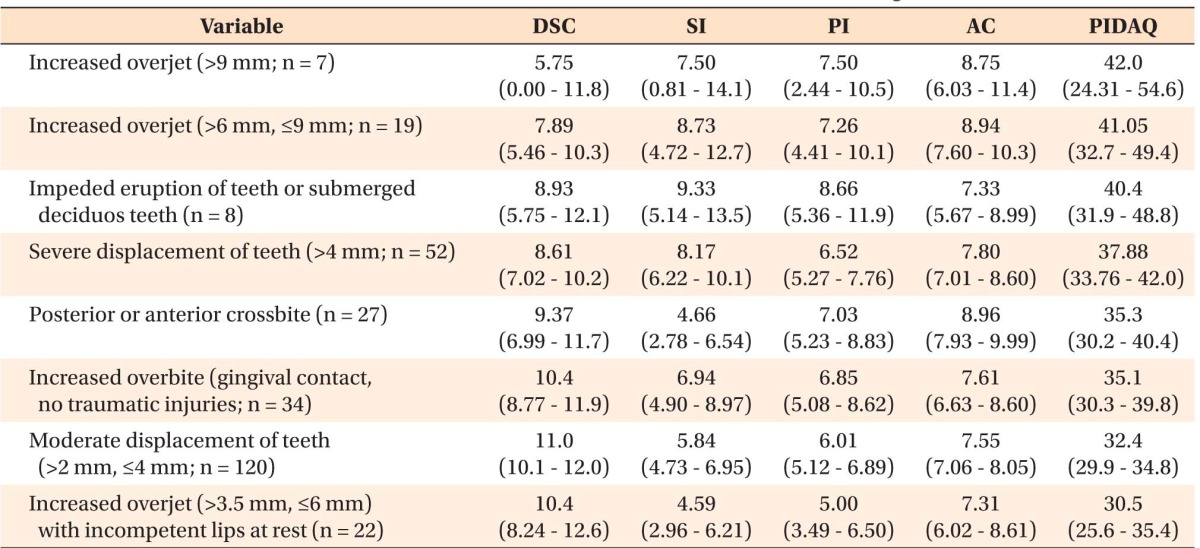




 PDF
PDF ePub
ePub Citation
Citation Print
Print


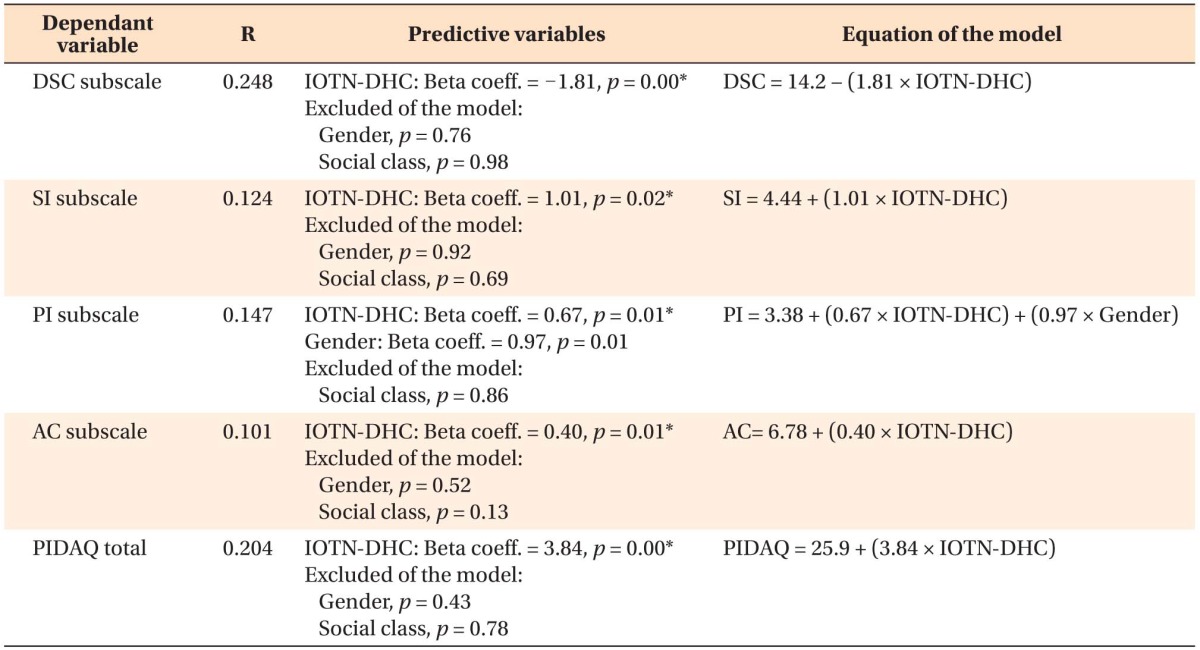
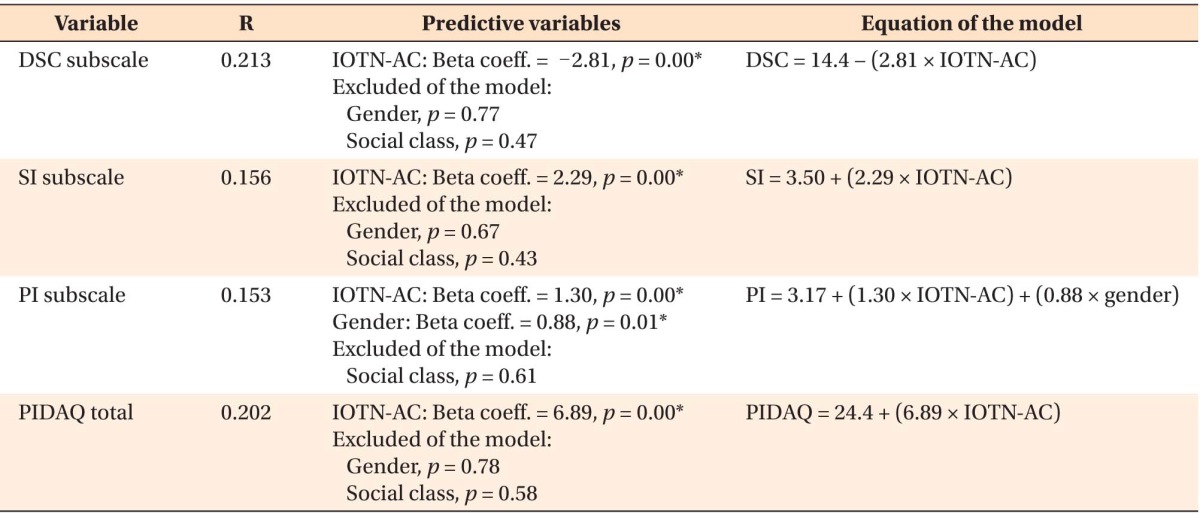
 XML Download
XML Download